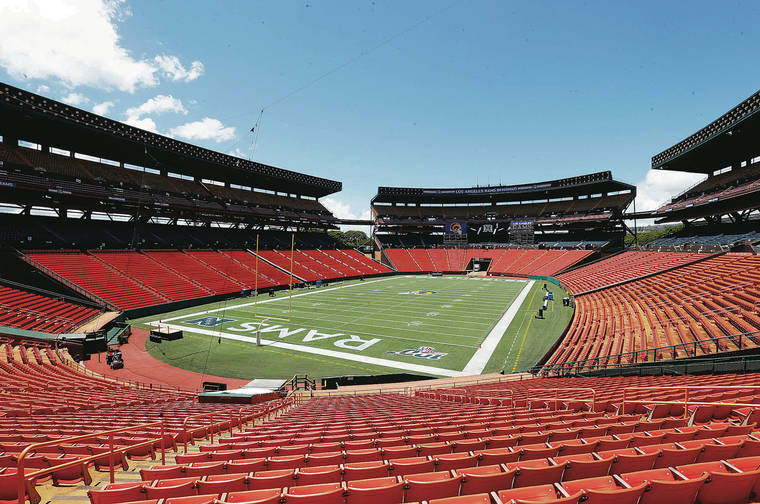Column: P3 approach can make Hawaii projects happen during pandemic

CINDY ELLEN RUSSELL / 2019
In April, approximately 200 companies from development and building industries participated in an online RFQ pre-response conference prior to the release of a Request for Qualifications (RFQ) for the New Aloha Stadium and Entertainment District (NASED).
Two common themes emerged as most of the world self-quarantined: reflection and reset. COVID-19 Opens in a new tab forces each of us to reflect on the critical importance of human connection inherent to our daily lives, including the public transit we take to get to work, our public parks and beaches, and the public buildings where we gather for shared experiences and entertainment.
As problem-solvers, we find ourselves drawn to the possibilities of a major reset in areas where we can improve the quality of life for people. Residents in cities and states across the U.S. recognize that our infrastructure is overburdened to the point of national crisis.
Too often, when we talk about the state of U.S. infrastructure we focus on potholes in freeways and crumbling bridges. Regrettably, the condition of our social infrastructure has not had the same attention. Social infrastructure is a term that applies to buildings and projects other than municipal services and transportation. Schools, civic buildings, state hospitals, stadiums, convention centers and even jails are examples of social infrastructure.
Unfortunately, the nation’s social infrastructure also is crumbling due to conflicting priorities and decades of budgetary challenges. As a result, too many cities and states have billions of dollars of backlog maintenance now compounding their infrastructure problems on a nearly exponential curve.
Collectively, however, public health and economic recovery are both critical to returning our cities and communities to some sense of normalcy. Every local, state and federal government agency has a major role to play in both sides of this equation.
Looking to the state of Hawaii, on April 13 approximately 200 companies from development and building industries participated in an online RFQ pre-response conference prior to the release of a Request for Qualifications (RFQ) for the New Aloha Stadium and Entertainment District (NASED).
Don't miss out on what's happening!
Stay in touch with breaking news, as it happens, conveniently in your email inbox. It's FREE!
The RFQ release is a major milestone for the project as the state begins its process to select a development team partner for the 98-acre, mixed-use public-private-partnership (P3) development in Halawa, where the current Aloha Stadium stands.
Some may question why this P3 project is moving forward in the midst of the COVID-19 pandemic. Yet, many others are asking why more projects of this nature aren’t in the works.
The state of Hawaii’s approach of utilizing a P3 project should be part of every state’s plans. P3 projects are predicated on leveraging both public and private expertise and capital to define a long-term arrangement that converts a dollar of state investment to become three dollars through the involvement of a private partner.
While P3 is not a panacea, aligning the interests of government with the private sector enables the public sector to distribute risk, partner with experienced project planners, and secure alternative funding sources. Perhaps the biggest misconception is that P3 projects are about “privatization.” This is untrue and an unfortunate perception.
The P3 approach makes the difference between projects breaking ground and plans for needed projects collecting dust on a shelf. To our knowledge, Hawaii has never done a successful P3 project.
This is a challenging time for government agencies. However, projects focused on public need, a solid business case and due diligence can and should continue to be developed, even during challenging times.
There are numerous P3 opportunities in Hawaii that will lighten the financial burden of Hawaii taxpayers, diminish risk, deliver much-needed social infrastructure, as well as jobs, and accelerate a project’s delivery schedule.
Stacey Jones and Adam Shaw are principals with Crawford Architects and WT Partnership, respectively. Their companies partner with entities on P3 projects and are working with the state on the New Aloha Stadium Entertainment District.




